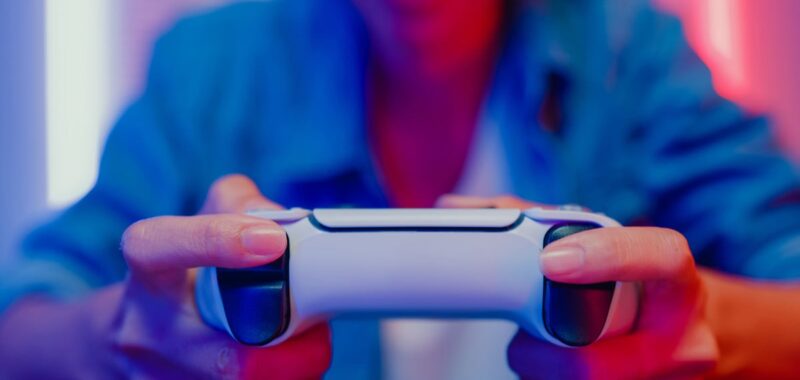
The global gamification market is expected to grow from $9.1B in 2020 to $30.7B by 2025, according to a report by MarketsandMarkets, demonstrating its increasing influence across various CPG industries, including beauty and personal care. As digital engagement becomes a key driver of consumer behavior, beauty brands are turning to gamification to enhance brand loyalty and sales.
We spoke to John Higgins, CEO of OS Studios, who provided his insights on how gamified experiences can drive business growth and strengthen consumer relationships in this evolving landscape.
Why gamification appeals to beauty consumers
“Makeup and beauty regimens are hands-on by nature,” Higgins began. “Today’s marketing strategies favor highly personalized and interactive experiences,” he explained, and the marketing strategy of gamification is an option for beauty brands to explore consumer engagement “in a way that aligns with the hands-on nature of individual beauty routines.”
Gamification techniques implement gameplay elements like competitions, point scoring, and community building. “Shopping and collecting personal care products can be a competitive sport to some, and gamification plays into that,” Higgins said.
For beauty brands, this could include virtual try-on applications or add-ons, customizable routine builders, product collection launches into social engagement platforms, skin care diagnostic tools, and reward-based purchasing incentives to create immersive brand experiences that foster stronger customer retention and differentiation in a competitive market.
Leveraging rewards and challenges for consumer engagement
Loyalty programs and interactive challenges can drive repeat purchases. “People, especially Gen Z shoppers, are driven by challenges, rewards, and competition,” he said, and “when they collect points toward future purchases, they build a long-standing relationship with their favorite brand and feel a sense of achievement.”
Further, he explained, “some brands even incentivize social sharing with rewards and VIP bonuses, further enhancing customer loyalty and engagement.”
On the B2B side, he added, cosmetics and personal care product manufacturers and suppliers can integrate mechanisms like bulk purchasing incentives or B2B loyalty programs into distribution models to enhance retailer partnerships and increase order volumes.
Successful gamification strategies in beauty
Major beauty brands are already leveraging gamification effectively. For example, as previously reported in CosmeticsDesign, e.l.f. Cosmetics has made great strides in the space through its collaborations with Roblox and the Apple Vision Pro.
Higgins also noted that major “brands like L’Oréal and Sephora are leading the way, [and] by integrating fully immersive experiences, social engagement, and rewards, they are driving massive sales and creating strong brand loyalty.”
L’Oréal’s Makeup Genius app and Beauty Squad loyalty program demonstrate how AR and reward-based engagement can convert casual consumers into loyal customers. Similarly, Sephora’s Beautyfeed fosters community-driven interaction.
“Our recent partnership with Fenty Beauty and Riot Games for Arcane Season 2 on Netflix is another standout example,” Higgins shared. “By merging beauty, gaming, and cosplay, this collaboration created an immersive experience that strengthened brand affinity.”
Gamification trends such as Perfect Corp.‘s virtual try-ons, Prose’s interactive quizzes, and Laniege’s community-building platforms are also gaining traction. “Virtual try-on experiences, for example, are becoming very popular because they allow people to try different makeup looks using AR before buying a product,” which is “not only practical, but fun!” he said.
Measuring gamification success in beauty marketing
To assess the impact of gamification, brands must track “success metrics, including engagement, conversion, and retention rates, [to] help measure the effectiveness of gamification,” Higgins explained. For example, he illustrated, “Completion metrics can reveal whether users are interacting with gamified content fully or dropping off mid-experience.”
For manufacturers and suppliers, these insights offer a roadmap to integrating gamification into product launches, distribution channels, and marketing strategies.
“Conversion rates are also important. How often does gamified content turn into a sale? What about sales funnels? Are they working as intended? These metrics can help brands determine whether their current path is the right one,” he clarified.
Future outlook
Over the next decade, beauty “brands are looking to expand into it to reach a wider audience and further gamify their content, [and] advancements in technology and cultural shifts will drive this evolution,” Higgins predicted.
This shift, he explained further, is likely to be driven by advancements in AI-powered hyper-personalization innovations like “Generative AI, [which] will allow for real-time personalization, resonating with Gen Z and Gen Alpha as they grow into key beauty consumers.”
Meanwhile, he added that sustainability-focused gamification, such as rewards for eco-friendly purchases, is also likely to become a significant trend.
With gamification becoming a cornerstone of digital marketing in the beauty sector, Higgins concluded that manufacturers and suppliers that embrace these strategies will be well-positioned to drive growth and customer loyalty in an increasingly interactive market.

